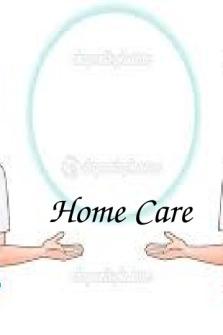NC2-Rehab:Restorative Care PDF

| Title | NC2-Rehab:Restorative Care |
|---|---|
| Author | Madeline Maloney-Park |
| Course | Nursing Concepts 2 |
| Institution | Conestoga College |
| Pages | 2 |
| File Size | 78.5 KB |
| File Type | |
| Total Downloads | 33 |
| Total Views | 120 |
Summary
rehab restorative care...
Description
NC2-Rehab/RC
Rehabilitation/Restorative Care Terminology Disability: umbrella term for impairment, activity limitations and participation restrictions Impairment: the state of being diminished, weakened or damaged, especially mentally or physically Handicap: a circumstance that makes progress or success difficult—term now considered offensive
Trends • • • •
15% of world's population have some form of disability rates of disability are increasing d/t population ageing and increases in chronic health conditions people with disabilities report seeking more health care than people without disabilities and have greater unmet needs persons with disabilities are more vulnerable to secondary conditions (e.g. Pressure ulcers), comorbidities, premature aging, engaging in health-risk behaviour and premature death
Rehabilitation • •
of people with disabilities is a process aimed at enabling them to reach and maintain their optimal physical, sensory, intellectual, psychological, and social functioning levels. Provides disabled people with the tools they need to attain independence and self determination
Restorative Care • •
approaches and principles aimed at improving, preventing deterioration or maintaining a resident's functional level and quality of life promotes the clients ability to adapt and adjust to living as independently and safetly as possible
Rehabilitation and Restorative Care • •
•
terms are used interchangably 2 types of care: ◦ continuing convalescence from acute illness or surgery—care that began in acute setting ◦ care that addresses chronic conditions that affect day-to-day life (aim to minimize effects of chronic condition) ◦ both types take place in hospital, homes and LTC settings GOAL: optimal function and independence
Principles • • •
• •
start treatment as early as possible stress abilities rather than disabilities use client-centered focus ◦ set realistic, individualized goals ◦ treat the whole client keep the client active and dynamic use a team approach
NC2-Rehab/RC •
prevent further injury or disability e.g. Falls prevention, pressure ulcers
Promoting Independence in ADLs Activities of Daily Living (ADL): requires interventions to promote • physical ability (strength, flexibility, balance, accomidations for sensory impairment ex. Vision) • cognitive ability (recognition—recall; judgement) • safety (risk assessment might be part of care plan ex.fall risk for older adult)
Promoting Independence of IADLs Instrumental Activities of Daily Living (IADLs) to support a client living independently at home or in assisted living they must: • be able to perform the necessary IADLs • purchase services from outside workers e.g. Personal assistance, housekeeping • and/or have a supportive network of family and/or friends
OREMS' Self-Care Theory • •
explains when nursing is needed arises when the self-care agency cannot meet self-care requistites (when a client cannot administer self-care)
Five Methods of Nursing Help 1. 2. 3. 4. 5.
acting or doing for guiding teaching supporting providing an environment to promote patient's ability to meet current or future demands
Functional Assessment • • •
•
an objective review of an individual's ADLs and IADLs used to establish a baseline, to predict rehabilitation outcomes, and to evaluate therapeutic interventions assessment tools ◦ ADLs—KATZ ◦ IADLs—Lawton persons are deemed to be totally independent, partially independent, or dependent
Amputation • •
11th most common procedure performed on the lower extremities there are several major causes for amputation including diabetes, vascular disorders, tumors, gangrene, uncontrolled infections, trauma to the limb...
Similar Free PDFs

UTI Care Plan - Care Plan
- 7 Pages

Care plan 3 - Care Plan
- 3 Pages

Care Plan 1 - Care plan
- 7 Pages

Care Plan 2 - Care plan
- 21 Pages

Home-care
- 22 Pages

N101L Care Plan - Nursing Care Plan
- 11 Pages

Primary Care
- 7 Pages

Ob care map 1 - care map
- 4 Pages

Community CARE
- 2 Pages

Wound Care
- 1 Pages
Popular Institutions
- Tinajero National High School - Annex
- Politeknik Caltex Riau
- Yokohama City University
- SGT University
- University of Al-Qadisiyah
- Divine Word College of Vigan
- Techniek College Rotterdam
- Universidade de Santiago
- Universiti Teknologi MARA Cawangan Johor Kampus Pasir Gudang
- Poltekkes Kemenkes Yogyakarta
- Baguio City National High School
- Colegio san marcos
- preparatoria uno
- Centro de Bachillerato Tecnológico Industrial y de Servicios No. 107
- Dalian Maritime University
- Quang Trung Secondary School
- Colegio Tecnológico en Informática
- Corporación Regional de Educación Superior
- Grupo CEDVA
- Dar Al Uloom University
- Centro de Estudios Preuniversitarios de la Universidad Nacional de Ingeniería
- 上智大学
- Aakash International School, Nuna Majara
- San Felipe Neri Catholic School
- Kang Chiao International School - New Taipei City
- Misamis Occidental National High School
- Institución Educativa Escuela Normal Juan Ladrilleros
- Kolehiyo ng Pantukan
- Batanes State College
- Instituto Continental
- Sekolah Menengah Kejuruan Kesehatan Kaltara (Tarakan)
- Colegio de La Inmaculada Concepcion - Cebu





